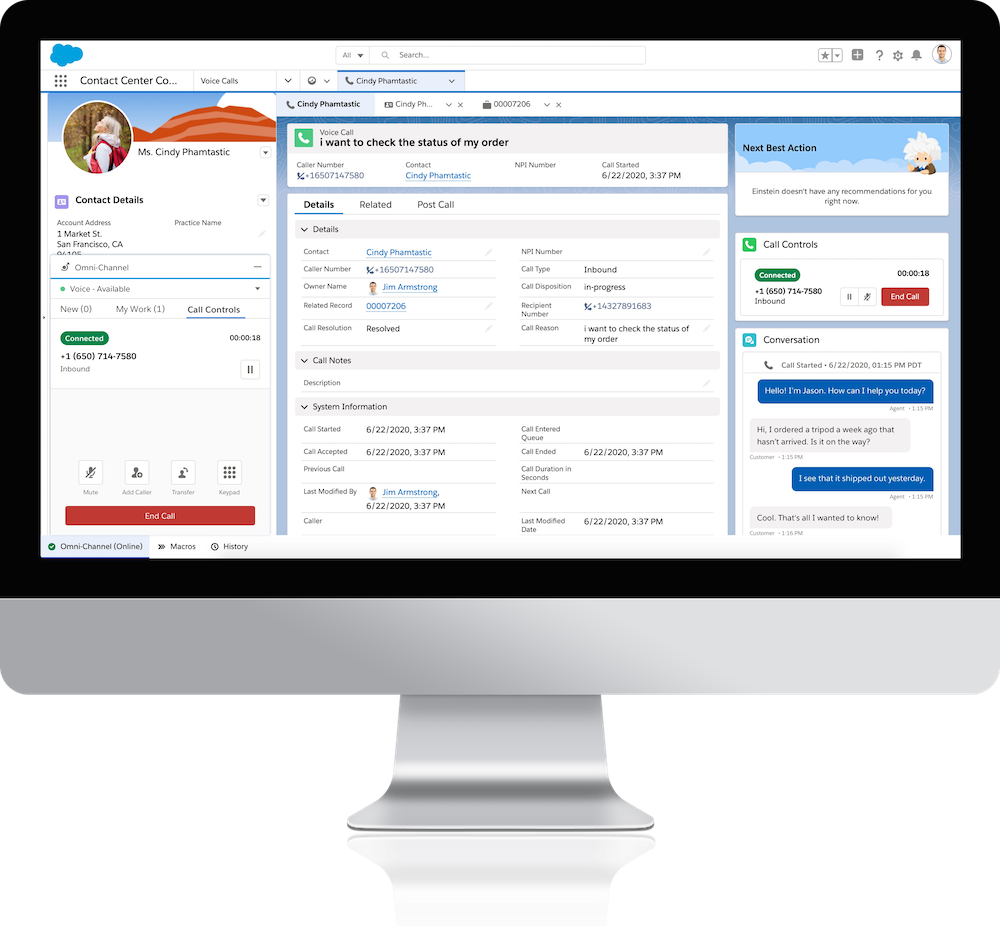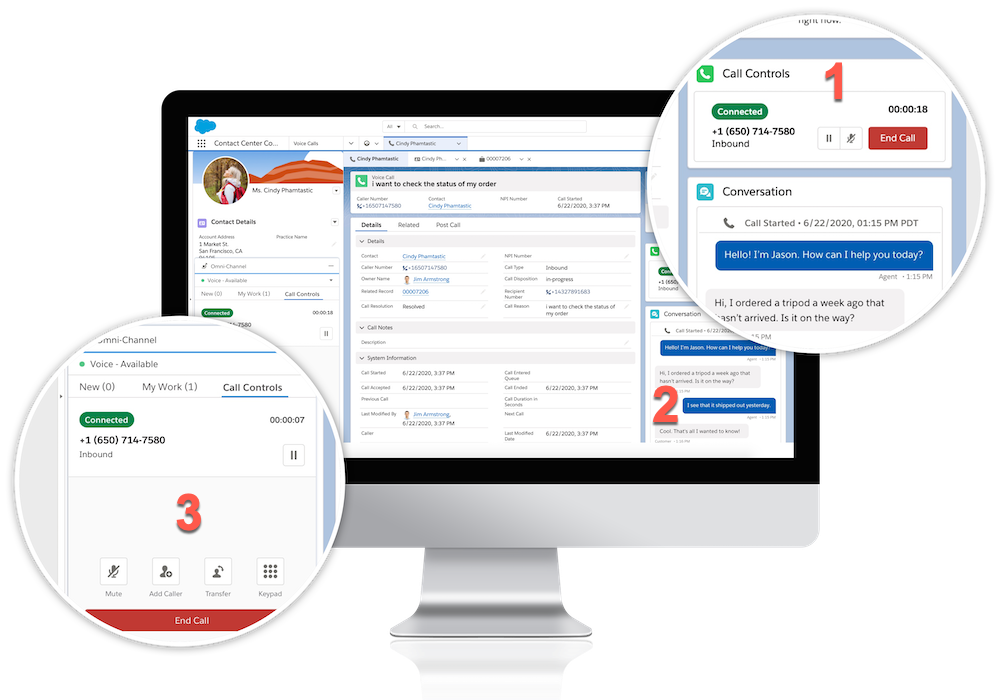Learn About Service Cloud Voice
Learning Objectives
What Is Service Cloud Voice?
Like most companies, Ursa Major Solar offers phone support to its customers. Even with the rise of digital engagement and the fact that customers use an average of 10 different channels to contact companies, 93% of customers pick up a phone to call for help.
With that in mind, Sita Nagappan-Alvarez, the CEO of Ursa Major Solar, wonders if there’s a way to improve the phone support experience for both her customers and support agents. According to PwC’s report on the Future of CX (Customer Experience), 80% of customers consider speed and convenience most important for good service. Sita wants a faster way to deliver better service over the phone. She’d also like to ensure that her agents have all the customer data and productivity tools they need to focus on customers—not technology—when customers call. To Sita, delivering exceptional service is as critical to her business as building extraordinary solar panels. Sita asks her rock star admin, Maria Jimenez, for help.
- Gives agents and supervisors real-time Omni-Channel visibility from the console.
- Integrates telephony and shows calls all on one platform—the Service Cloud platform.
- Boosts agent productivity and shortens call times with fewer clicks and less data entry and wrap-up tasks.
- Implements a phone channel quickly without code.
- Offers choice in which telephony system to use.
All of these capabilities sound incredible to Sita. But she wonders how they work with her service team’s existing console and digital engagement tools.
Service Cloud Voice and the Service Console
Just like other channels, Service Cloud Voice appears in the Service Console so that agents have a 360-degree view of each customer and their requests. The console is a virtual help desk that lets anyone on your service team, or anyone at your company, see a personalized view of each customer and their case, alongside any digital conversations. And that positions everyone to deliver a better customer experience.

Service agents use Service Cloud Voice to capture customer information from voice calls and other digital channels added to the console, such as email, chatbots, web chat, social media, online communities, SMS messaging, and more. Agents use this data to answer customers’ questions and deliver great customer experiences, no matter where customers are. An admin like Maria can easily add or remove any digital engagement tools from the console at any time. Agents can work on multiple channels and customer cases simultaneously to make everyone happy.
The combination of the console and Voice gives agents a brand-new experience that has never been available before—bringing together telephony, digital conversations, and customer relationship management (CRM) data all in one place.
Here's what a console with Voice offers.

- Telephony inside of Salesforce—natively integrate phone conversations inside the console rather than screen pops to share one platform for easier data capture and a better call experience.
- Automatic voice transcription—convert human speech into text on cases and other records in real time with no typing or hassle.
- Omni-Channel to push calls to agents and manage workloads alongside other channels—agents access a single Omni-Channel widget for calls and any interaction with fewer screens, clicks, and distractions.
Key Differences Between Service Cloud Voice and Salesforce Call Center
Service Cloud Voice sounds amazing to Sita, but since Ursa Major Solar already uses Salesforce Call Center, she asks Maria to list some key differences.
| Service Cloud Voice | Salesforce Call Center |
|---|---|
| Natively built for the Service Cloud platform and available preintegrated and out of the box with Amazon Connect—a cloud-based contact center solution. Alternatively, select your choice of telephony partner and integrate using a prebuilt managed package. | Requires the integration of a third-party telephony system on each computer to enable calls. Admins install computer telephony integration (CTI) packages created by developers or partners from AppExchange to create a call center. |
| Seamless integration of data and voice transcription to automatically populate records, suggest actions or content with AI, and unlock powerful reporting options with Analytics. | Includes screen pops, click-to-call, and some data recording and analytics features based on call information. |
| Call-control tool integrates with one Omni-Channel widget for easy access to all digital and phone conversations for fewer clicks and screens. Supervisors can see all digital interactions and help out. | Call-control tool integrates with the console’s footer and is separate from other digital conversations. |
Sita understands that Service Cloud Voice offers some major enhancements over Salesforce Call Center. But before she commits to making the switch, she’d like to learn more about benefits.
Benefits of Service Cloud Voice
Along with the advantages already mentioned about Service Cloud Voice, Maria points out to Sita these benefits by role.
| Role | Benefits |
|---|---|
| Agents |
|
| Supervisors |
|
| Admins & IT |
If choosing Service Cloud Voice with Amazon Connect:
If choosing Service Cloud Voice with Partner Telephony:
|
With all of these benefits, Sita is excited to have her service team switch to Service Cloud Voice. She asks Maria what they need to do next. The answer: Plan for an implementation.
Resources
- Salesforce Help: Service Cloud Voice
- Salesforce Help: Service Cloud Voice Learning Map
- Salesforce Help: Service Cloud Voice Implementation Guide
- PwC Report: Experience is everything: Here’s how to get it right
- Salesforce Help: Choose Your Service Cloud Voice Telephony Model
- Trailhead: Service Cloud Voice Setup: Quick Look
- Trailhead: Expand Service Cloud with Digital Engagement